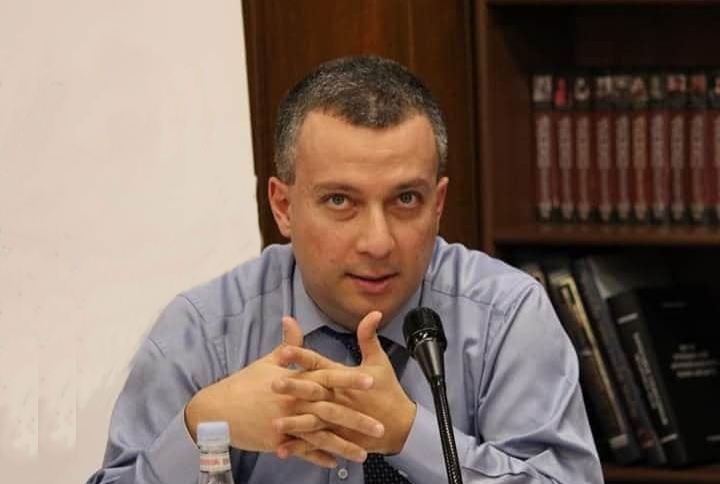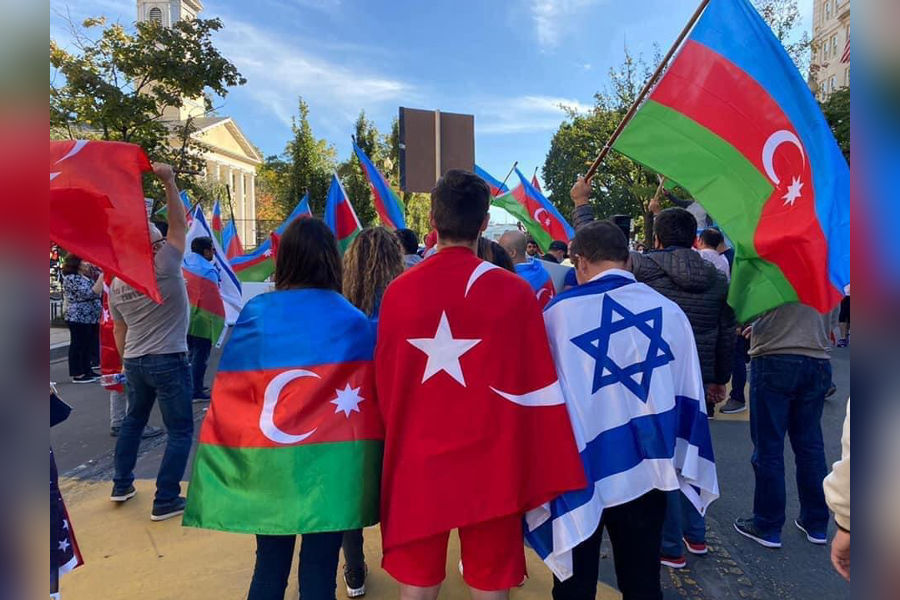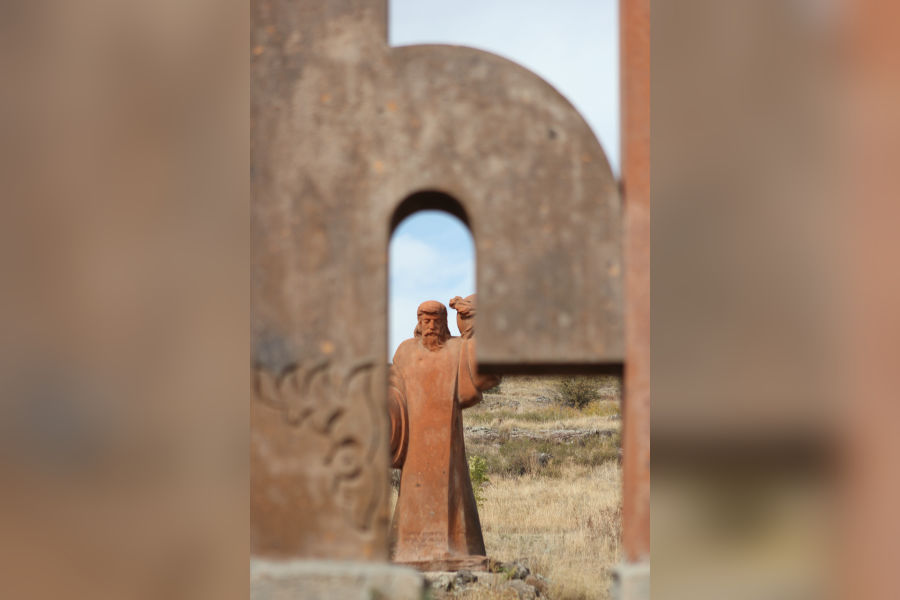From Mumbai to Varna via Armenia: The new India-Europe route

The war in Ukraine has disrupted global supply chains, creating significant complications for transit routes crossing the Russia-Europe border. The world economy, still reeling from COVID-19, found itself in another crisis. Yet, even before the pandemic and the war in Ukraine, the primary sea transit routes connecting Southeast Asia with Europe, like the Suez Canal, were congested due to the growing cargo volumes. As one of the rising stars of the global economy, India was looking forward to establishing alternative routes to reach Europe. In 2000, India, Iran and Russia signed an agreement to launch the International North-South Transport Corridor (INSTC) to connect India with Europe via Iran and Russia. Three main routes were identified to connect India with Russia: via Iran and Azerbaijan, via Iran and the Caspian Sea and via Iran-Turkmenistan-Kazakhstan. According to the initial plan, the cargo should enter northern Europe from Russia, creating an India-Europe route that circumvents the Suez Canal.
However, the war in Ukraine and the complete rupture in Russia-West relations brought the realization of this plan into danger. As the new cold war disrupts Russia-West economic and political relations, any large-scale transit of cargo passing the Russia-Europe border looks too risky for the international logistic and insurance companies. At the same time, India’s need for additional trade routes to reach Europe circumventing the Suez Canal remains valid. In parallel to the discussions around INSTC, Iran in 2016 put forward a new international transport corridor project, Persian Gulf-Black Sea, which should connect Iran with Europe via the South Caucasus. The negotiations were paused during the COVID pandemic, but all potential participants of the project – Iran, Armenia, Georgia, Azerbaijan, Bulgaria and Greece – expressed their interest in participating.
In recent years, India invested in the Iranian port of Chabahar, viewing it as a focal point to reach Central Asia via Afghanistan circumventing Pakistan. The 2021 takeover of Afghanistan by the Taliban made the transit via Afghanistan challenging. However, India continued its efforts to modernize Chabahar Port and received the US sanctions waiver for its investments. Currently, Chabahar does not have access to the Iranian railway network, but Tehran plans to bring the railway to Chabahar. As India looks for additional routes to reach Europe, circumventing the Suez Canal and avoiding the negative impact of Russia-West confrontation, the Persian Gulf-Black Sea corridor fits well into these plans.
The corridor itself may connect Iran with Georgia via either Armenia or Azerbaijan. Armenia and Azerbaijan have railway and highway connections with Georgia, and Azerbaijan has a railroad up to the Azerbaijan-Iran border. There is a missing link of some 165 kilometers inside Iran (the Rasht-Astara line) to connect Azerbaijani and Iranian railways. In January 2023, Russia and Iran agreed to launch the construction with Russian funding. Azerbaijan also has a highway connection with Iran.
Armenia does not have a direct railway connection with Iran. In November 2021, Azerbaijan closed the main Armenia-Iran highway in the Goris-Kapan section, forcing Yerevan to construct an alternative road to reach the Iran border, which cannot serve large-scale transit cargo transportation. There is a functioning railway from Yerevan up to the Armenia-Nakhichevan border in Yeraskh, and Nakhichevan has a railway connection with Iran via Julfa. However, as Armenia-Azerbaijan peace negotiations are at an impasse due to the maximalist position of Azerbaijan, no international transit project may rely on that possibility.
However, if an Iran-Azerbaijan-Georgia route may seem more realistic from a purely logistical point of view, geopolitics tells another story. Iran-Azerbaijan relations are at a historical low, given the Azerbaijan-Israel growing defense and security cooperation and Azerbaijan’s criticism against alleged violation of rights of Azerbaijanis living in Iran. Iran uses Azerbaijan’s territory to reach Russia, and providing additional leverage to Azerbaijan will not serve Iranian interests. India also may have reservations about putting Azerbaijan into the India-Europe route. Azerbaijan is not India’s enemy but cultivates friendly relations with Pakistan and is a strategic ally of Turkey, which under President Erdogan has pursued an anti-Indian stance. At the same time, the emerging Pakistan-Turkey-Azerbaijan alliance does contribute to Azerbaijan-India relations. Thus, for Iran and India, Azerbaijan is not a preferable way to connect Iran with Georgia and Europe.
However, geopolitical considerations are not enough to convince states and multinational logistic and insurance companies to invest billions of dollars on a project which depends on the narrow alternative road connecting Goris with Kapan in the mountainous Syunik region of Armenia. To become a transit country for the India-Europe transit route via Iran and Georgia, Armenia needs new highways connecting it with Iran and Georgia.
The “North–South” project, the 555 kilometer Bavra-Meghri highway, which should connect the Armenia-Georgia and Armenia-Iran borders, started in 2012. Paradoxically, only 35 kilometers of the highway were finished during the past 11 years; construction continues on the Talin-Gyumri section, which connects Yerevan with the Georgian border. However, nothing has been done along the Yerevan-Meghri part besides constructing the 20 kilometer Yerevan-Artashat section. The Artashat-Meghri part is divided into three subsections: Artashat-Sisian, Sisian-Kajaran and the Kajaran-Iranian border. Recently, the government announced a Kajaran-Iranian border section tender, and the winner will be announced this spring. The EU promised to provide up to 700 million euros for the Sisian-Kajaran part, and negotiations are underway regarding the construction modalities.
Meanwhile, the Artashat-Sisian section (around 170 kilometers) remains in the initial projecting phase. If Armenia wants to be part of the India-Europe transit route, it should significantly accelerate its efforts to finish the southern part of the road connecting Artashat with the Iranian border and the northern section connecting Gyumri with the Georgian border. Given the extensive experience of Indian companies in taking part in large-scale infrastructure projects abroad and India’s interest in launching the India-Europe transport corridor route via Iran and Georgia, Armenia should start negotiations with India to discuss the involvement of Indian funding and Indian companies into the North-South project.









The article is filled with inconsistencies. Not only is there no sense in a route to Europe via Russia given the admitted political circumstances that are here to stay, but there is also Georgia that is not interested in supporting Russia avoiding sanctions due to the Russian aggressions. In fact the whole plan looks more and more like a rushed and immature reaction to the Chinese Belt and Road initiative than sound planning. Iran is another candidate for more sanctions too because of nuclear program. What a joke.
Fantastic article.
Great summary! All that is needed is de jure recognition of the Republic of Artsakh and its right to collect taxes and tolls on both the North South and East West traffic.
A North South Highway from a Black sea port in Georgia, through Armenia and ending up in Chabahar , Iran would benefit all three countries because it would reduce their isolation and increase trade and economy between Europe and India. But Russia would be unhappy because it would reduce its leverage over these three countries. Even the US may become unhappy because it would decrease the isolation of Iran. However Azerbaijan may put aside its irredentist tendencies (and Israeli aggression) towards Iran and make a deal to have a North South route through Azerbaijan which could go to both Georgia/Black Sea and Russia. Baku then becomes a hub of energy production and transportation, ensuring long term prosperity, and continued isolation of Armenia